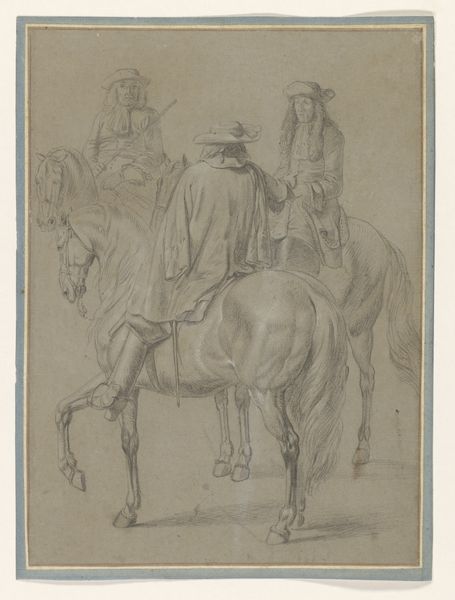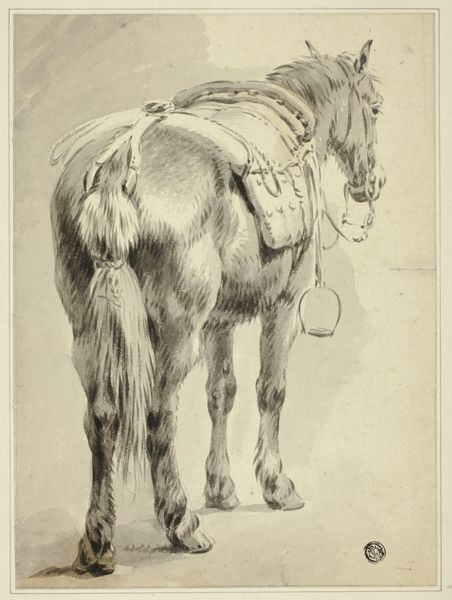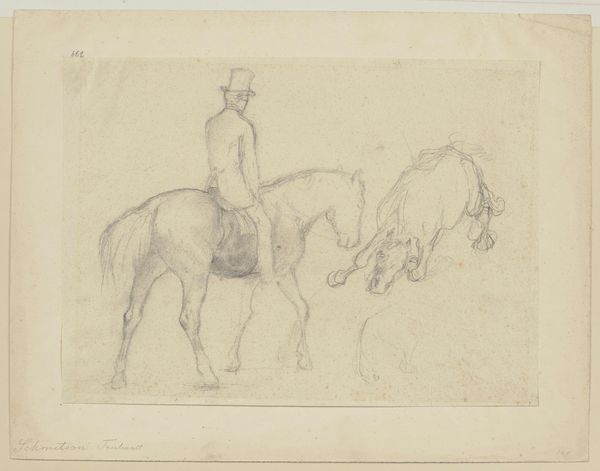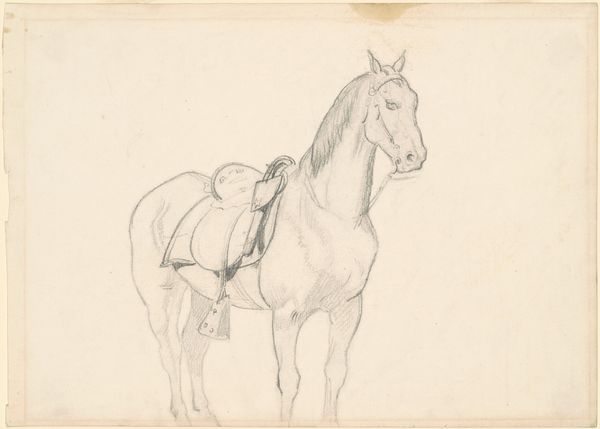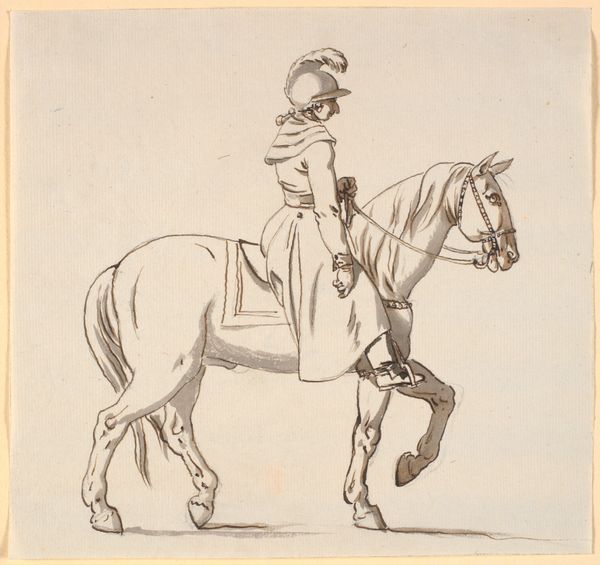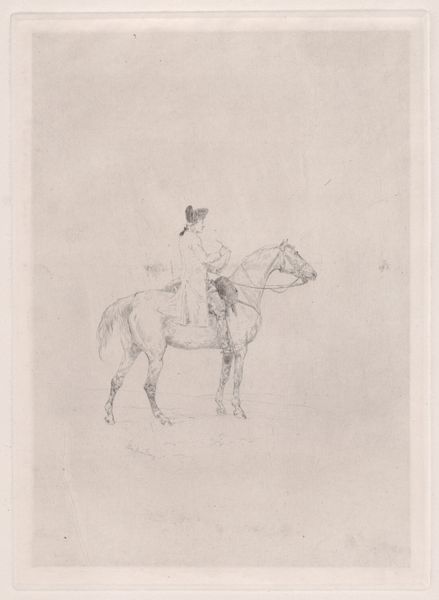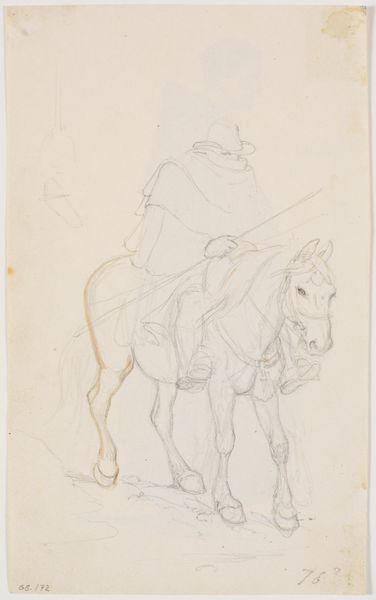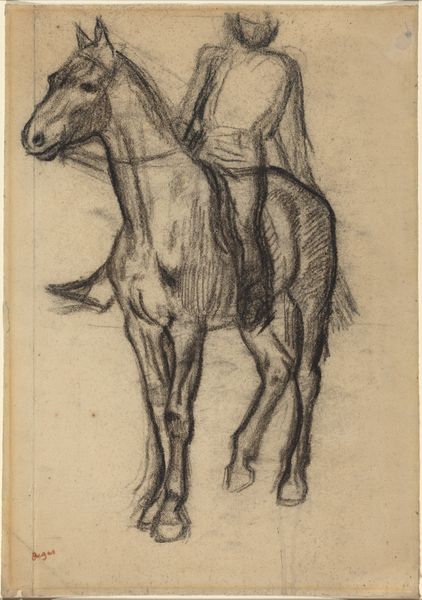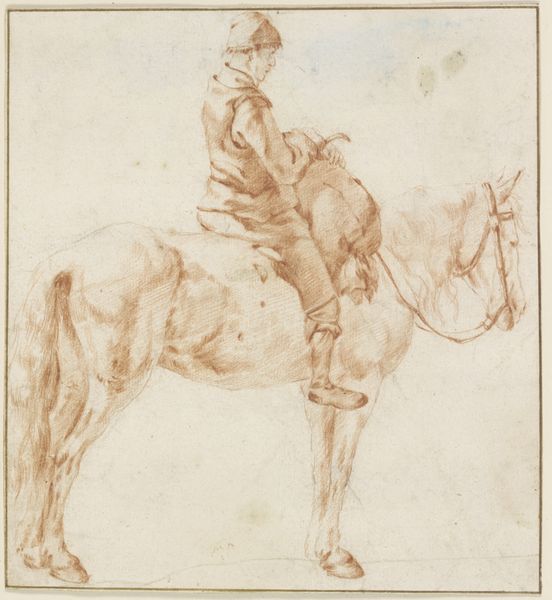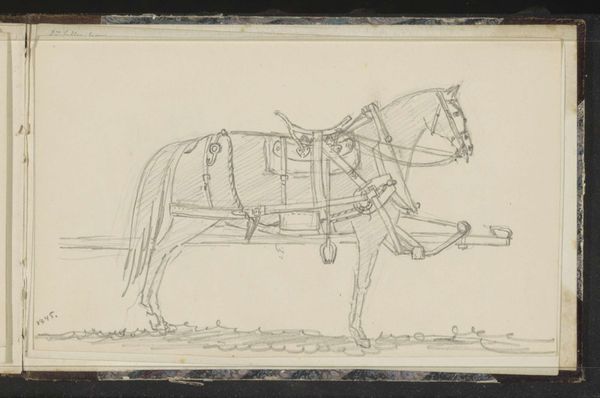
drawing, paper, pencil, graphite
#
portrait
#
drawing
#
landscape
#
figuration
#
paper
#
romanticism
#
pencil
#
line
#
graphite
Dimensions: 247 × 189 mm
Copyright: Public Domain
Editor: This is "Man on a Horse" by Wilhelm von Kobell, done with graphite and pencil on paper. It’s hard to put my finger on it, but something about the sketchiness gives it this feeling of immediacy and almost makes me feel like I’m looking over the artist’s shoulder. What stands out to you when you see this piece? Curator: What strikes me immediately is the performative aspect inherent in equestrian portraiture during this period. The rider, though perhaps not individually recognizable here, is consciously adopting a role. Consider the societal expectations embedded in this imagery; horsemanship was a clear indicator of social class and status. The artistic choice of using pencil and graphite suggests this might be a preliminary study, but it also brings to mind the democratization of art during the Romantic era, where accessible materials invited a broader participation in artmaking. Does this change your understanding of its immediacy? Editor: That’s a really interesting point – I hadn't thought about the performance aspect. I was just looking at the looser lines, not the tradition behind portraying someone on horseback. I guess the materials used are not just practical, but carry social weight too. Curator: Exactly. And consider the historical context – where might this type of image circulate, and who might be its intended audience? This artist seems concerned with how to convey the power of the sitter through both the animal and how the pencil sits on the paper. How do those combined readings reshape our understanding? Editor: That reframes everything, making me consider its purpose beyond just being a quick study. Thinking about who saw it and what message it sent changes my perspective a lot. Curator: Indeed, it shifts our focus from solely artistic skill to understanding how social dynamics and representational strategies intersect. Editor: This has completely transformed my initial reading! I definitely learned something new about considering the broader context of the work.
Comments
No comments
Be the first to comment and join the conversation on the ultimate creative platform.

